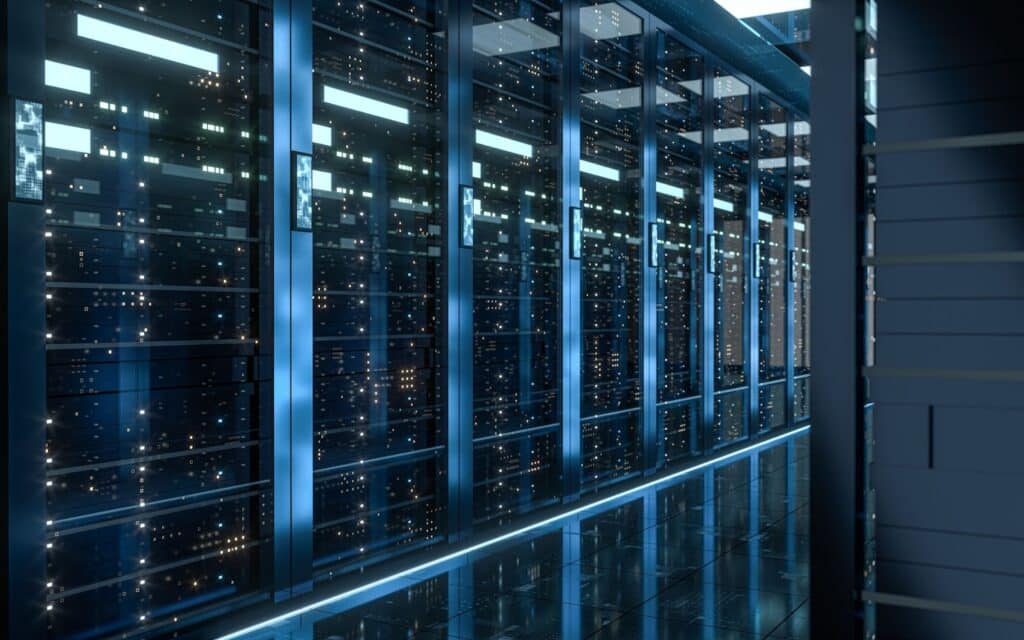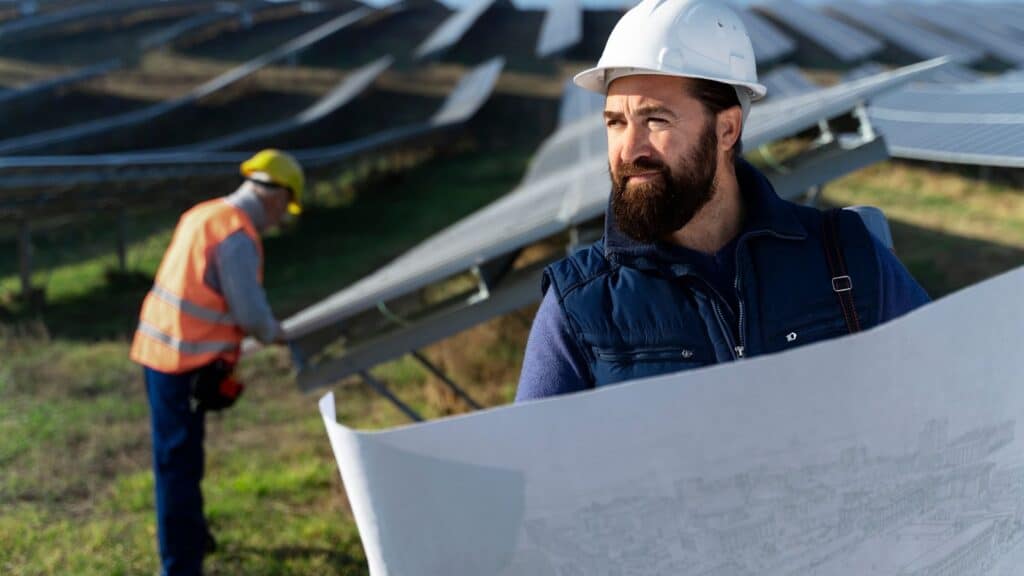As artificial intelligence continues to revolutionize industries, the infrastructure supporting it must evolve just as quickly. Modern AI workloads demand massive computing power, real-time data processing, and continuous uptime. These unprecedented requirements are rendering traditional data centers obsolete.
Legacy infrastructure, built for slower, less dynamic workloads, struggles to meet the rising expectations for performance, flexibility, and energy efficiency. In contrast, next-gen facilities are built with adaptability in mind, designed to scale with demand while maintaining high reliability and operational sustainability.
A key differentiator in this evolution is how these facilities are powered. AI data centers power computation and innovation, driving a growing need for renewable energy integration, localized battery storage, and flexible backup systems like green hydrogen and natural gas. The electricity demand from AI data centers makes up 24% of the entire server electricity demand, signaling an urgent need to move away from outdated grid-reliant models.
Developers, businesses, and communities are now embracing intelligent, energy-conscious infrastructure. Explore how AI data centers power the digital world of tomorrow with smarter, cleaner solutions.
AI Data Centers Power the Future: Efficiency and Scalability Compared
As data becomes the new currency of the digital economy, AI data centers are redefining what performance means. Built for speed, volume, and resilience, these facilities are engineered from the ground up with intelligent systems that optimize energy distribution and computing loads. Traditional data centers, often retrofitted to meet today’s demands, lack this inherent agility, resulting in energy inefficiencies and constrained scalability.
The rise of hyperscale and AI-specific workloads has forced a paradigm shift in how energy is sourced, stored, and delivered. AI data centers power operations using a mix of renewables, advanced battery storage, and hybrid solutions. Renewable energy innovation is foundational to meeting AI’s need for high-density, always-on infrastructure.

Smarter Energy Use and Adaptive Loads
AI workloads are volatile, peaking unexpectedly and consuming more power per rack than traditional IT environments. Smart energy management systems in modern facilities dynamically allocate resources, responding to real-time data to reduce waste and prevent overloads. Legacy data centers, often tied to fixed, centralized power sources, can’t match this level of precision.
To bridge this gap, new facilities increasingly incorporate solar and battery storage systems directly on-site. These solutions reduce dependence on strained grids and support time-shifting capabilities, allowing data centers to charge during off-peak hours and discharge when AI activity surges. It’s a win for both operational uptime and carbon-conscious energy usage.
Scaling Up with Energy Campus Infrastructure
Unlike traditional sites that expand in fixed phases, energy campuses offer a modular approach, allowing AI data centers to grow organically based on usage and market demands. These campuses are pre-designed with high-capacity grid interconnections, diverse energy inputs, and optimal geographic siting to support utility-scale expansion without delays.
Flexibility is essential for hyperscalers that require hundreds of megawatts in weeks, not years. By adding power to the land before construction begins, developers can accelerate timelines and eliminate permitting bottlenecks. By integrating energy sources like solar fields or hydrogen hubs into the development plan, they simultaneously reduce long-term costs and environmental impact.
Legacy Infrastructure vs. Modern Buildouts: What’s Under the Hood?
The architectural design of a data center impacts its performance, scalability, and sustainability. Traditional data centers were built with a focus on square footage and redundancy, not agility. In contrast, AI data centers are tailored to accommodate the unique demands of artificial intelligence: ultra-high-density computing, low-latency networking, and mission-critical uptime.
Modern facilities are no longer simple server warehouses. They’re dynamic ecosystems where physical infrastructure, software, and energy systems are tightly integrated. Legacy infra, by comparison, often lacks the flexibility to support renewable integration or the digital control layers needed for smart grid responsiveness.
Physical Footprint and Site Selection
AI-driven sites are strategically located based on more than just land availability. Factors like solar irradiance, proximity to transmission lines, and environmental impact assessments now guide site selection. Fine-tuning location ensures energy-efficient operation and reduces permitting delays, something that older facilities, often located in now-suboptimal regions, struggle to overcome.
Additionally, the compact design of AI data centers reduces land-use requirements by maximizing output per square foot. Through vertical racks, liquid cooling, and purpose-built energy cores, these sites achieve higher performance density than legacy data centers.
Grid Interconnection and Redundancy
Legacy infra relies on aging grid infrastructure that is increasingly unreliable during peak load events or natural disasters. AI data centers, however, are built with diverse interconnection strategies, including direct ties to solar, hydrogen, and energy storage systems.
Rather than depending on a single grid source, modern data campuses are engineered for grid-optional operation, leveraging microgrids, multi-path feeds, and utility partnerships. This layered redundancy ensures constant uptime while reducing the strain on public energy infrastructure.
Rethinking Energy Usage: Clean Integration vs. Grid Dependency
One of the starkest contrasts between AI data centers and their traditional counterparts lies in how they manage energy usage. While both consume significant power, the source and strategy behind that consumption vary drastically. AI data centers prioritize sustainability, automation, and flexibility, making clean energy a necessity.

By integrating renewable energy and storage solutions directly into the data center footprint, operators can stabilize costs, reduce emissions, and avoid grid congestion fees.
Solar and Energy Storage as Primary Solutions
The smartest AI data centers power their operations using a combination of on-site solar and battery energy storage systems (BESS). This setup enables facilities to operate independently during peak hours, drawing from solar reserves charged during daylight and stored efficiently.
In contrast, legacy infra still leans heavily on utility-supplied electricity, with 56% of data centers’ energy generated by fossil fuels. This model is less sustainable and increasingly vulnerable to pricing volatility and blackouts. By incorporating grid-scale storage and solar, modern facilities protect themselves and the environment from these risks.
Bridging Today and Tomorrow with Green Hydrogen and Natural Gas
Green hydrogen is an appealing solution for data centers looking to go fully carbon-free. Using solar energy to power electrolyzers, hydrogen can be stored and used when solar or wind is unavailable, providing clean, dispatchable power.
Meanwhile, natural gas continues to serve as a strategic bridge fuel. For AI data centers in development, pairing gas turbines with battery systems ensures reliable power today while paving the way for hydrogen integration tomorrow. Legacy data centers, lacking the infrastructure for this dual-fuel evolution, face far greater challenges in future-proofing operations.
Environmental Impact: Building a Sustainable Digital Backbone
Data centers now account for an estimated 1–1.3% of global electricity use, a number expected to rise sharply as AI adoption grows. Minimizing this impact requires intentional design, responsible sourcing, and scalable renewable integration. The sustainability profile of a facility is a critical decision factor for regulators, investors, and customers alike.
AI data centers lead in environmental strategy by embedding sustainability from day one. Traditional data centers often attempt to retrofit green practices onto legacy infrastructure, an approach that’s both expensive and inefficient.
Emission Reductions and Renewable Sourcing
By leveraging clean electricity from solar, wind, and green hydrogen, modern facilities dramatically cut emissions. For instance, AI campuses powered by energy storage and renewables can reduce carbon output by thousands of tons annually, creating a meaningful contribution to climate targets.
In contrast, traditional data centers are locked into regional grid mixes and may have limited access to clean alternatives. Their dependence on grid-supplied fossil power makes meaningful decarbonization more difficult without major overhauls.
Community-Centered Development Practices
Responsible data center development now encompasses community impact. AI data centers are often built with local stakeholder input, long-term land partnerships, and public-private agreements that bring jobs and infrastructure to underserved regions.
Legacy facilities, built in a different era, may lack these frameworks. New developments prioritize inclusive growth and sustainability commitments from the outset, aligning with both ESG benchmarks and public expectations.
The Reliability Factor: Backup Power and Downtime Prevention
For AI models to run continuously, uptime is essential. Every second of downtime can disrupt operations, skew analytics, and compromise safety in sectors like healthcare and finance. AI data centers power their systems with a multi-layered reliability stack that far exceeds traditional norms.
Legacy infra often depends on diesel backup generators or basic failover systems. While once adequate, these models fall short in a world where AI workloads run 24/7 with zero tolerance for failure.
Advanced Battery Storage and Microgrid Design
Modern facilities deploy BESS as primary backup, not secondary options. These systems instantly bridge the gap during grid failures, ensuring zero-interruption performance. When paired with a local solar array, these systems can even outlast extended outages without the need for carbon-intensive generators.
Microgrids allow data centers to “island” from the main grid and operate autonomously, providing clean and consistent power during both routine peaks and disaster scenarios. This is a major upgrade over the inflexible backup systems common to legacy infra.
Resilience Through Strategic Site Placement and Virtual PPAs
Site selection is another key differentiator. AI data centers are often built in low-risk areas with access to multiple power corridors. Some also engage in virtual power purchase agreements (VPPAs) to secure renewable energy from off-site solar or wind farms, reducing their physical risk while cutting emissions.
Legacy data centers, often constrained by old urban or industrial locations, can’t always take advantage of these strategies. Outdated strategies make resilience planning more difficult and costly, especially as climate risks escalate.
Future-Proofing Data Centers: From Traditional Designs to Modular AI
With digital transformation accelerating, AI will soon underpin everything from autonomous vehicles to real-time supply chains. Data centers that want to remain relevant must think long-term about capacity, flexibility, sustainability, and readiness for whatever comes next.

Traditional data centers were never built for this level of demand. Retrofitting them may buy time, but it won’t deliver the kind of energy efficiency, scalability, or intelligence that AI-centric systems require to thrive.
AI-Specific Load Management and Forecasting
AI data centers incorporate real-time load forecasting, allowing operators to anticipate power spikes and respond instantly. These systems often integrate AI themselves to optimize energy usage patterns, reduce overhead, and improve cooling efficiency, closing the loop on smart infrastructure.
Traditional centers, without advanced load prediction systems, face increased strain during AI bursts, risking overheating, outages, and energy overspend. This lack of foresight becomes a critical bottleneck as workloads become more complex.
From One-Off Builds to Modular Growth
AI infrastructure is rarely built all at once. Instead, it grows in modular phases that match computational demand and business evolution. This model benefits from pre-integrated energy infrastructure like storage banks and hydrogen fuel systems, allowing seamless expansion.
Legacy infra often requires full-scale retrofits to grow, adding cost, complexity, and delay. That lack of agility can mean the difference between leading and lagging.
Rethink Your Data Center’s Energy Future
AI is changing how we use data and transforming the infrastructure that powers it. As demand for high-performance, low-latency, and carbon-conscious operations accelerates, the divide between modern and legacy infra grows wider. Facilities built for yesterday’s workloads can’t keep up with the scale, complexity, or sustainability expectations of today’s AI-driven world.At 174 Power Global, we specialize in building advanced, renewable-powered energy solutions for the digital backbone of tomorrow. From solar and energy storage to green hydrogen and fully integrated energy campuses, we design, develop, and deliver what modern data centers need to thrive. Let’s build a cleaner, smarter future together. Contact us to learn how we can power your next-generation facility.



